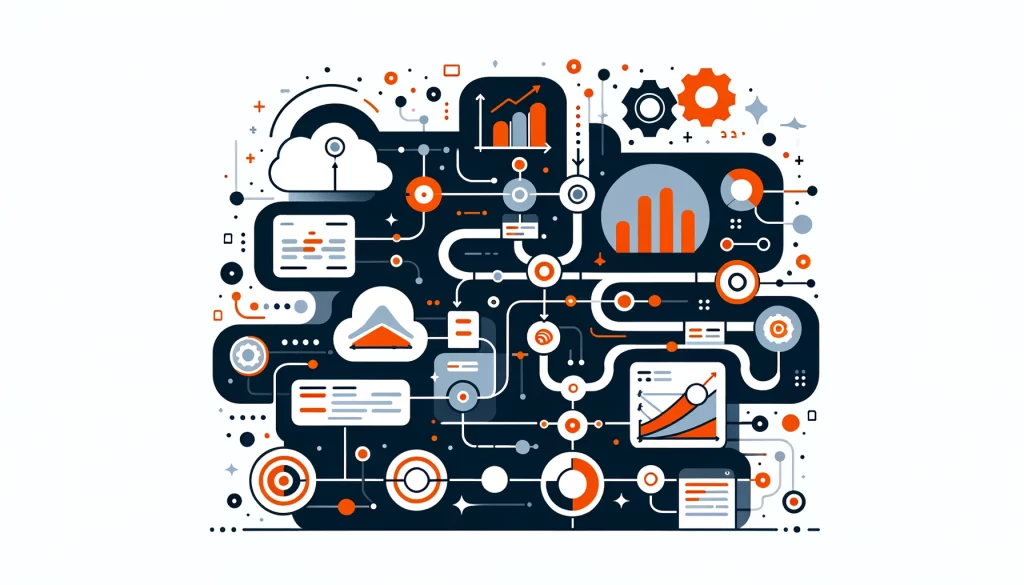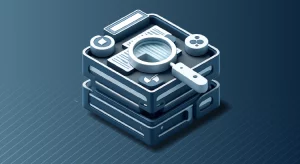
Data Orchestration

While having access to vast amounts of information can be a significant competitive advantage, it also presents unique challenges. One of the biggest challenges is managing and utilizing it effectively. This is where data orchestration comes into play.
What is Data Orchestration?
Data orchestration involves integrating, organizing, and managing resources from various sources to make them usable for analyzing and other business purposes.
This process gathers data from various sources and systems. It transforms the data into a standard format. It then shares the data with different applications and platforms.
Think of orchestration as the conductor of an orchestra.
Orchestration is like a conductor bringing together different instruments to create a harmonious symphony. In the same way, it brings together different sources to create a unified and usable data set.
The Data Orchestration Process
The data orchestration process typically involves several key steps:
Collection and Preparation
The first step in data managing is collecting info from various sources and preparing it for integration.
This involves collecting data from different systems such as databases, APIs, and files. The data must be formatted in a way that the orchestration tool can work with.
During this stage, quality checks are also performed to ensure the accuracy and consistency of the resources. This may involve tasks such as cleansing, deduplication, and validation.
Transformation
The information needs to be collected and prepared first. Then, it should be converted into a standardized format. This format should be easy for the intended systems and applications to use.
This process involves mapping fields from the source systems to the target systems. It also includes making any necessary transformations, like converting types, performing calculations, and aggregating data.
If you are merging customer data from various systems, you may need to standardize date formats. You might also have to adjust currency values and merge duplicate entries.
Loading and Integration
After the resources have been transformed, it is loaded into the target systems and integrated with existing info.
This could involve uploading information into a warehouse, database, or other storage systems. It could also involve updating current records and creating new ones.
Integration may also involve combining data from multiple sources to create a single, unified view of the info.
You may need to combine sales data from your CRM with customer information from your marketing automation tool. This will help create a comprehensive customer profile.
Governance and Security
Governance and security are critical aspects of orchestration. This involves ensuring that data is accurate, consistent, and secure throughout the orchestration process.
Governance includes defining standards, policies, and procedures, as well as implementing quality checks and audits.
It also involves managing data lineage and ensuring that resources are being used in compliance with relevant regulations and policies.
Security involves protecting resources from unauthorized access, corruption, and loss. This may include implementing access controls, encryption, and backup and recovery procedures.
Benefits of Data Orchestration
Data orchestration provides numerous benefits to organizations, including:
Improved Utilization
By integrating data from multiple sources and making it readily available for analyzing and other business purposes, orchestration helps organizations better utilize their assets.
This can lead to improved decision-making, increased functional efficiency, and new business insights.
Enhanced Quality
Data organizing helps ensure the accuracy and consistency of data by applying quality checks and transformations throughout the process.
This can help reduce errors and inconsistencies that can lead to incorrect analyzing and decision-making.
Increased Efficiency
Data orchestration automates many of the manual tasks involved in integration and management, such as extraction, transformation, and loading.
This can significantly reduce the time and effort required to manage and utilize data. This also frees up resources for other tasks.
Better Compliance
Organizing resources can help organizations better comply with regulations and policies by providing a centralized and controlled environment for managing and processing information.
This can help reduce the risk of breaches and ensure that resources are being used in accordance with relevant regulations.
Real-World Examples of Data Orchestration
To better understand the value of orchestration, let’s look at a couple of real-world examples.
Example 1: Retail Company
A large retail company with multiple brick-and-mortar locations and an e-commerce website wants to gain a better understanding of its customers’ buying behavior.
To do this, it needs to integrate information from its point-of-sale systems, e-commerce platform, and customer loyalty program.
Using orchestration, the company can extract information from these various sources, transform it into a common format, and load it into a centralized warehouse.
From there, the data can be analyzed to identify trends and patterns in customer behavior, such as which products are most popular, when customers are most likely to make a purchase, and which marketing campaigns are most effective.
Example 2: Healthcare Provider
A healthcare provider with multiple clinics and hospitals wants to improve patient outcomes and reduce costs.
To do this, it needs to integrate data from its electronic health record (EHR) systems, claims processing systems, and patient monitoring devices.
The healthcare provider organizes resources to gather information from various sources. They then convert this information into a common format. Finally, they store resources in one central location.
The data can help improve patient care by identifying at-risk patients, enhancing treatment plans, and reducing hospital readmissions. Analyzing the data can help identify patients who are at risk for certain conditions. It can also help in improving treatment plans for patients. Additionally, it can assist in lowering hospital readmissions.
The Future of Data Orchestration
As organizations continue to generate and collect more information, the need for effective orchestration will only continue to grow.
In the future, we may have improved tools and techniques that use artificial intelligence and machine learning. These tools will help automate and enhance the management of resources.
In the future, we can anticipate a greater focus on real-time orchestration of resources. This will help organizations integrate and analyze data in real-time. They won’t require to wait for data to accumulate in batches.
This will enable faster decision-making and more agile operations.
Conclusion
Data organizing is a critical capability for organizations that want to unlock the full value of their assets.
By integrating and managing info from multiple sources, information organizing helps organizations better utilize their resource for analyzing, decision-making, and other business purposes.
While orchestration can be complex and challenging, the benefits are clear.
By investing in data orchestration, organizations can improve quality, increase efficiency, and gain new insights that drive business value.
